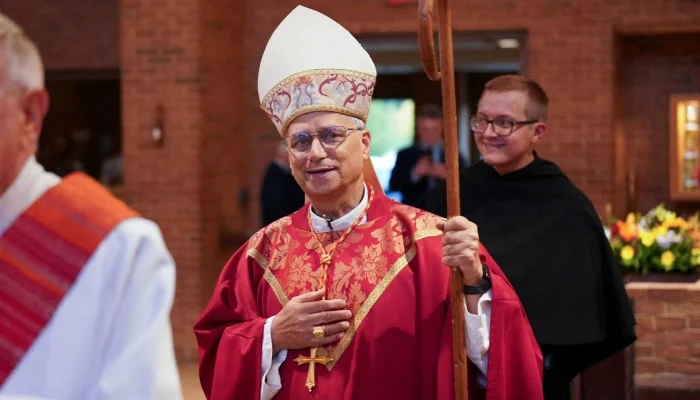From his initial moments on the balcony of St Peter’s Basilica, Pope Leo XIV offered three significant clues about the kind of leader he will be for the 1.4-billion-member Catholic Church.
Leo, formerly United States Cardinal Robert Prevost, was elected as the new pope by the world’s cardinals on Thursday, the second day of the conclave convened to choose a successor to Pope Francis, who passed away last month.
He is the first pope hailing from the US but also holds dual citizenship in Peru, where he served as a missionary for decades before his elevation to cardinal.
Leo’s first indication was his choice of papal name. Popes often use this selection to convey their initial major message regarding the priorities of their new papacy.
Francis adopted his name from the 13th-century St Francis of Assisi, who renounced wealth and advocated for the care of the poor.
The last pope to take the name Leo, Leo XIII, dedicated much of his 1878-1903 papacy to championing the rights of workers, calling for fair wages, equitable working conditions, and the right to form unions.
“By picking the name Leo XIV, he shows he is committed to the social teaching of the church,” commented Rev Thomas Reese, a Jesuit commentator who closely follows the papacy.
“La pace sia con tutti voi!” (Peace be with you!), Leo’s first public words, echoed the greeting used by Catholics in their celebrations but also immediately offered a message of peace to a world fractured by conflict.
Prior to entering the secret conclave on May 7, the world’s cardinals issued a statement lamenting the conflicts “in Ukraine, the Middle East, and many other parts of the world” and making a “heartfelt appeal” for peace.
The new pope expressed his desire to share God’s peace, describing it as “a disarmed peace and a disarming peace” that is “humble and persevering.”
Leo also acknowledged Francis, who gave his final blessing to crowds in Rome on Easter Sunday, the day before he succumbed to a stroke following weeks of battling double pneumonia.
“We still have in our ears that weak, but always courageous voice of Pope Francis,” he said.
Leo sought permission to offer the same blessing Francis had used just weeks prior, stating: “God loves us, God loves everyone, and evil will not prevail. We are in the hands of God.”
Leo’s third clue lay in his choice of attire.
In contrast to Francis, who eschewed all the traditional papal vestments, even on the first day of his election in 2013, Leo wore a traditional red papal garment over his white cassock.
While Leo follows in the tradition of Francis, he signaled that he is a new, and distinct, pope.



